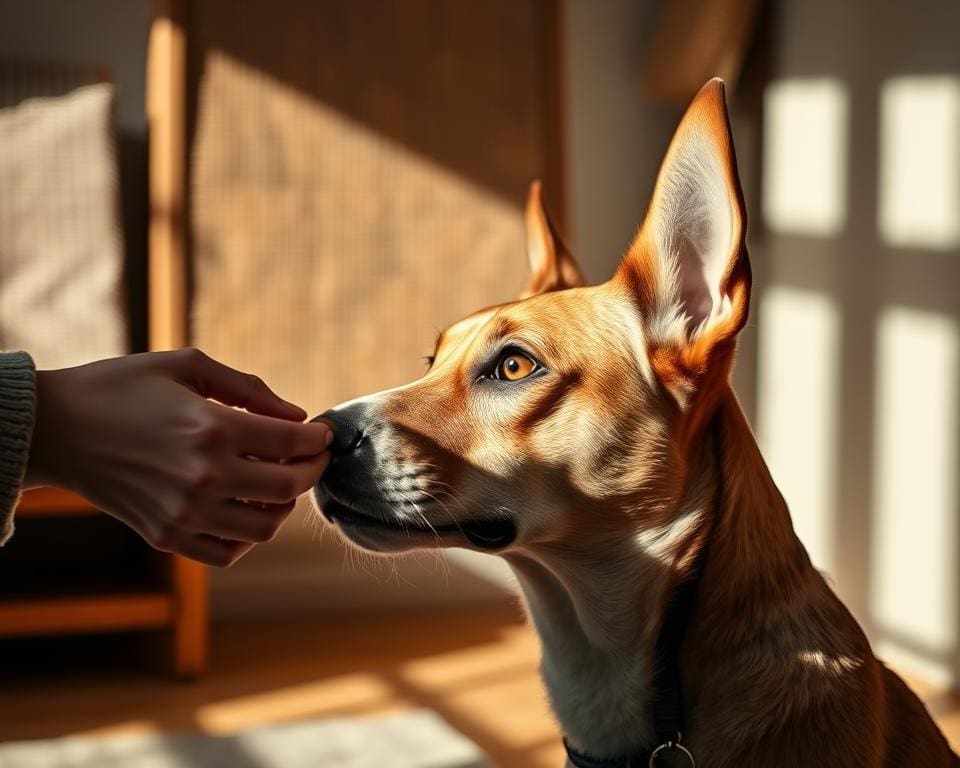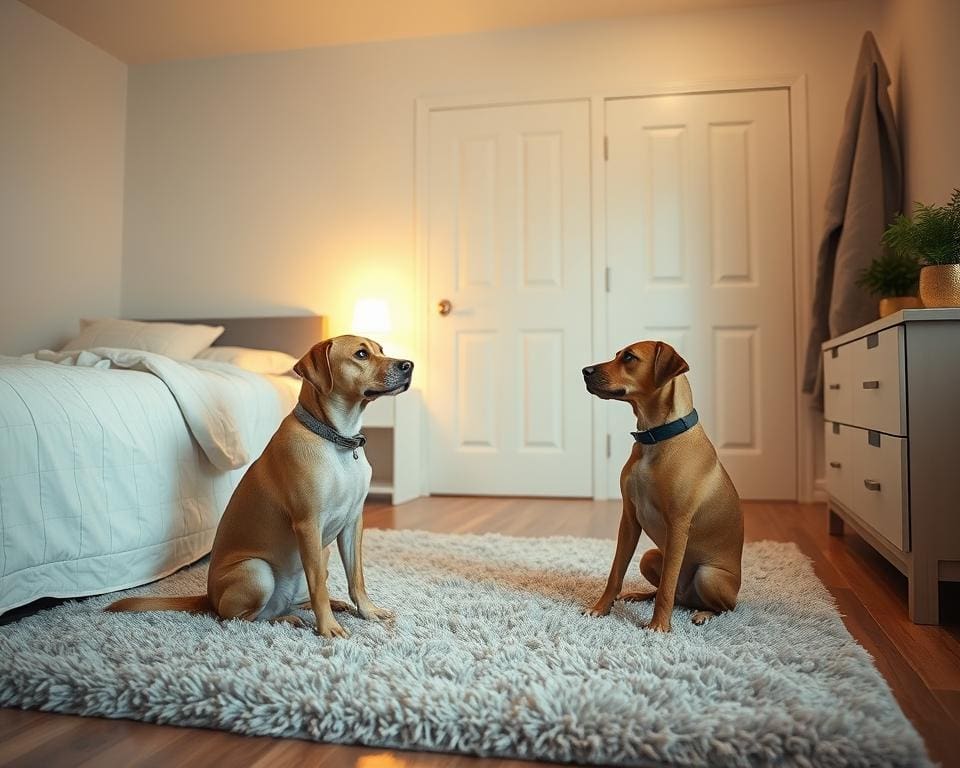Indoor urination can be a distressing issue for dog owners, often leading to frustration and concern. Many pet parents seek effective indoor urination solutions to restore harmony in their homes. Understanding how to stop a dog urinating in the house is crucial for improving not only the cleanliness of your living space, but also the well-being of your furry companion.
This guide aims to provide you with insightful dog training tips, helping you navigate the nuances of canine behaviour. By addressing the root causes of this behaviour and implementing practical strategies, you can cultivate a healthier and more joyful relationship with your dog.
Understanding Canine Behaviour
To address house soiling issues effectively, it is crucial to understand the underlying reasons behind a dog’s indoor urination. Various factors contribute to this behaviour, including instinctual traits and environmental influences. Gaining insight into these motivations can promote canine behaviour modification, creating a more harmonious living environment for both the pet and owner.
Common Reasons for House Soiling
Dogs may exhibit house soiling for several reasons. Among the most prevalent are:
- Territorial Marking: Dogs often mark their territory by urinating, especially when new animals or humans enter their space.
- Medical Issues: Conditions such as urinary tract infections or kidney problems can lead to sudden changes in urination habits.
- Lack of Training: Insufficient house training can cause confusion about where it is acceptable to relieve themselves.
The Impact of Stress on Urination
Stress plays a significant role in canine behaviour, influencing emotional and physical responses, including urination. Factors that may induce stress in dogs encompass:
- Relocation or changes in household dynamics.
- Separation anxiety when left alone.
- Exposure to loud noises or crowded environments.
Understanding these stress factors highlights the importance of proactive house soiling prevention. By recognising the signs and addressing the root causes, owners can foster a supportive environment, enabling their dogs to thrive emotionally and physically.

How To Stop A Dog Urinating In The House
Understanding your dog’s needs is essential when stopping dog peeing inside. By recognising early signs of indoor urination and establishing a reliable potty schedule, you can help your pet learn appropriate bathroom habits effectively.
Recognising the Signs of Indoor Urination
Dog owners should be vigilant in noticing signs that their pet might need to relieve itself indoors. Typical behaviours include:
- Sniffing around the floor
- Circumming in circles
- Pacing or restlessness
- Sudden barking or whining
Being aware of these indicators allows for timely intervention, which significantly reduces the chances of accidents. Recognising these signs quickly can be key in stopping dog peeing inside.
Establishing a Potty Schedule
A structured routine plays an invaluable role in effective potty training methods. By taking your dog outside at regular intervals, ideally after meals, playtime, or waking up, you create a predictable potty schedule. Aim for:
- Puppies: every 1 to 2 hours
- Adult dogs: every 4 to 6 hours
- Post meals or resting periods
Consistency in this approach not only reinforces good habits but also strengthens the bond between you and your dog. With patience and understanding, it becomes much easier to achieve success in stopping dog peeing inside.
Effective Potty Training Methods
Potty training can be one of the most important steps in forming a positive bond with your dog. Implementing effective potty training methods can transform this often challenging process into a rewarding experience for both the owner and the pet. Two of the most beneficial approaches are crate training and positive reinforcement techniques, which play a crucial role in establishing good habits.
Using Crate Training for Success
Crate training offers a safe and secure environment for your dog. By introducing your pet to a crate slowly, it becomes a comforting space where they can rest without fear of accidents. Dogs generally avoid soiling their sleeping area, making crates an effective tool in housebreaking. When properly used, crate training fosters a sense of structure and discipline, aligning with the best dog training tips.
Positive Reinforcement Techniques
Positive reinforcement is a powerful strategy in effective potty training methods. Rewarding your dog with treats or affection immediately after they relieve themselves outdoors helps associate the behaviour with something enjoyable. This approach encourages had behaviours and strengthens the bond you share. Consistent praise and positive experiences can significantly enhance your dog’s learning journey.
Implementing Housebreaking Advice
Addressing housebreaking issues involves practical steps that can significantly improve your dog’s behaviour and prevent indoor accidents. A well-defined structure supports this process, ensuring your canine companion understands where and when it is suitable to relieve themselves.
Creating a Designated Outdoor Area
Establishing a specific outdoor area for your dog to use fosters a sense of purpose when they go outside. Choose a spot that is easily accessible and quiet, allowing your dog to focus without distractions. Regularly taking your dog to this area reinforces the behaviour you desire, making it a consistent part of their routine.
Identifying Triggers for Accidents
Understanding the triggers behind indoor accidents is crucial when implementing housebreaking advice. Common triggers include excitement, fear, or changes in routine that may prompt your dog to soil indoors. By monitoring their behaviour, you can better anticipate these occurrences and respond proactively, thus preventing indoor accidents more effectively.
Indoor Urination Solutions for Puppies
Training a puppy can be a rewarding experience, especially when considering effective indoor urination solutions. Young dogs thrive on consistency, which plays a crucial role in their learning process. Applying effective potty training methods ensures a smoother transition from indoor habits to outdoor expectations.
Ensuring Consistency in Training
Consistency is key when implementing potty training methods. Establish a regular schedule for outdoor trips, aiming for frequent visits after meals, playtime, and naps. This routine helps reinforce the desired behaviour. Positive reinforcement, such as praise or treats, can further enhance their motivation to go outdoors.
Utilising Training Pads Effectively
Training pads are valuable tools for managing indoor urination. Place the pads in areas where the puppy spends time to encourage their use. It is important to change the pads regularly to maintain cleanliness and appeal. Gradually reduce the number of pads as your puppy learns outdoor habits, transitioning them to recognise that outside is the appropriate place for potty needs.
Advanced Dog Training Tips for Adult Dogs
For owners of adult dogs grappling with persistent urination habits, the journey towards effective canine behaviour modification can be challenging yet rewarding. Implementing advanced dog training tips can significantly aid in reshaping undesirable behaviours. Patience and consistency lie at the core of this process, enabling a stronger connection between the dog and its owner.
Behaviour Modification Techniques
Utilising behaviour modification techniques can pave the way for transformative changes. Start by identifying specific triggers that prompt your dog to urinate indoors. Gradually desensitising your dog to these triggers involves incremental exposure, allowing them to understand appropriate responses over time. Pair this with clear command cues to reinforce desired behaviours, fostering a respectful dynamic.
Dealing with Established Habits
Addressing established habits may seem daunting. It requires a strategic approach that blends gentle correction with positive reinforcement. Encouragement through rewards for outdoor urination can be motivating. Consistent timing during potty breaks is vital, ensuring that dogs develop a reliable routine. As you incorporate these advanced dog training tips, your dog will learn to trust your guidance, leading to lasting changes.
Preventing Indoor Accidents with Proactive Measures
Preventing indoor accidents requires attentive strategies and early detection methods. Dog owners play a crucial role in observing their pet’s behaviour and responding swiftly to signs that an accident may occur. Taking proactive measures not only minimises mishaps but also fosters a positive environment for both the pet and the owner.
Monitoring Behaviour for Early Intervention
Regularly monitoring your dog’s behaviour can alert you to potential indoor urination solutions. Look for specific clues, such as sniffing, circling, or whining, which often indicate the need for a bathroom break. By being attentive to these signs, you can intervene promptly and guide your dog outside before any accidents happen. Establishing a routine that includes frequent outdoor outings will significantly aid in this process.
Eliminating Urine Odours from Your Home
Successfully eliminating urine odours is vital in preventing future indoor accidents. Dogs may return to previously soiled areas if they can still detect the scent of their urine. Effective cleaning products designed for pet odours should be used, such as enzymatic cleaners. These products break down the urine compounds and eliminate the stench completely. Consider creating a consistent cleaning routine to keep your home fresh and inviting, making it less likely for your dog to revisit those areas.
Seeking Professional Help When Necessary
While many dog owners successfully tackle indoor urination issues with training and consistency, some situations may require expert insight. If your efforts in canine behaviour modification have not brought about the desired results, it may be time to consider involving a professional. Persistent urination inside the home can indicate underlying medical or behavioural problems that need addressing, and recognising these signs early can lead to more effective solutions.
Engaging a professional trainer can also provide you with advanced dog training tips tailored to your specific situation. A skilled trainer can assess your dog’s behaviour, offer customised strategies, and ensure that you are equipped with the right tools and techniques to foster improvement. This support can be invaluable, especially when dealing with established habits that seem challenging to break on your own.
It’s essential to remember that seeking help is not a sign of failure, but rather a proactive step towards a harmonious relationship with your canine companion. With the right guidance and resources, you can overcome indoor urination challenges and enjoy a thriving bond with your beloved pet.









